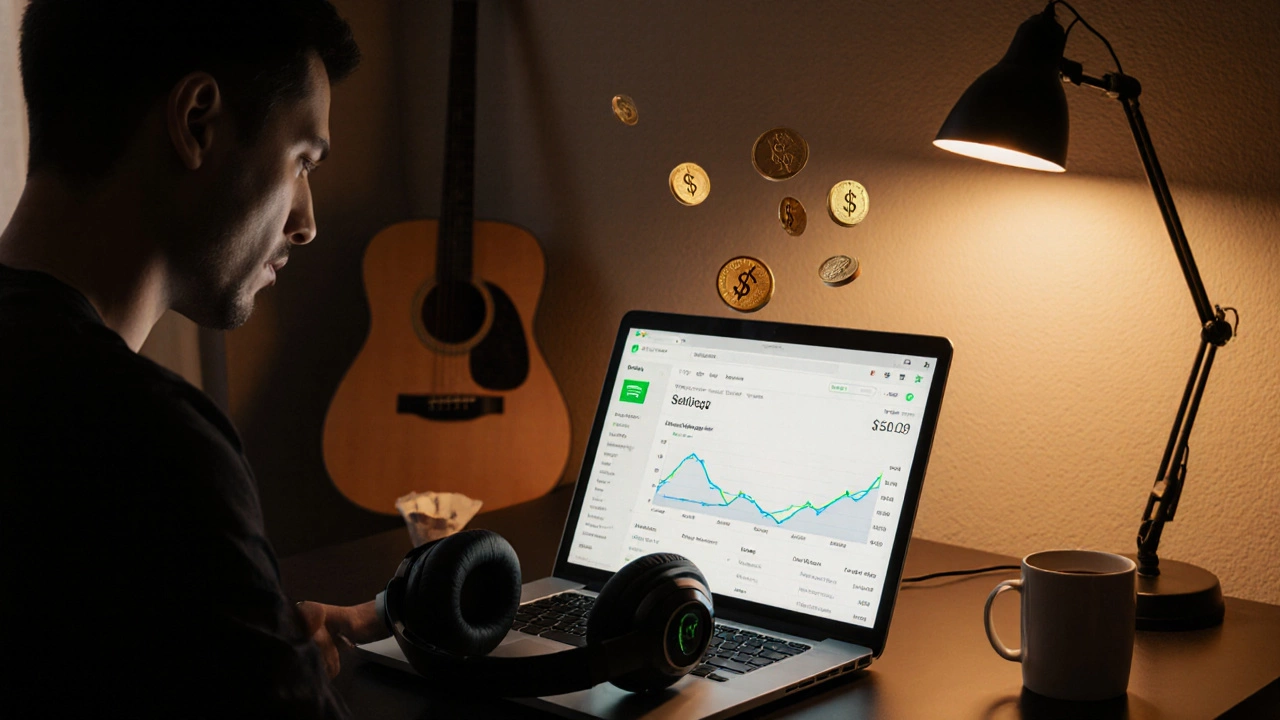Music Streaming Earnings Explained
When talking about Music Streaming Earnings, the income generated by artists, labels, and rights holders from plays on digital platforms. Also known as streaming revenue, it depends on how many times a track is streamed, the listener's country, and the specific platform’s payout formula.
One of the core pieces of the puzzle is Streaming Royalties, the money collected from each play and then divided among songwriters, performers, and publishers. Understanding these royalties is crucial because they directly shape the size of your music streaming earnings. Another related piece is Royalty‑Free Music, tracks that creators can use without paying per‑play fees, often licensed for a one‑time fee. While royalty‑free music doesn’t generate streaming royalties for the original creator, it influences how content makers budget their projects and can affect overall platform revenue.
Key Factors That Shape Music Streaming Earnings
First, the type of Digital Music Platform, services like Spotify, Apple Music, and YouTube Music that host and stream songs, sets the baseline payout. Each platform uses its own mix of subscription fees, ad revenue, and per‑stream rates. For example, Spotify’s average payout might be around $0.003 to $0.005 per stream, while YouTube Music blends ad earnings with subscription income, resulting in a slightly different per‑play value.
Second, the listener’s location matters. Streams from high‑income countries typically earn more because advertising rates and subscription prices are higher. That’s why many artists focus on building audiences in the US, Europe, and Japan to boost their earnings.
Third, the rights structure behind a track determines who gets paid. If a song has multiple songwriters, a performer, and a record label, the royalty pool gets split among all parties. Independent artists who own both composition and master rights often keep a larger share, which can dramatically increase their total earnings.
Finally, promotional tactics like playlist placement and algorithmic boosts can multiply streams. Getting on a popular editorial playlist can lead to a cascade of plays, raising earnings without any extra marketing spend.
Beyond the basics, many creators wonder how to leverage Artist Payout Models, the specific formulas platforms use to calculate payments for each stream. These models usually factor in total revenue, total streams, and a pro‑rata share for each track. Knowing the exact formula helps artists forecast income and set realistic goals for new releases.
Another angle is the rise of direct‑to‑fan platforms like Bandcamp and Patreon. While not pure streaming services, they allow musicians to earn money from fans without the platform’s cut. Combining these income streams with traditional streaming can create a more stable revenue mix.
In practice, tracking your music streaming earnings means monitoring dashboards on each platform, using analytics tools, and sometimes hiring a rights administrator to collect all applicable royalties. Accurate data lets you see which songs perform best, which regions generate the most revenue, and where to focus promotional effort.
All of these elements—platform types, listener geography, rights splits, playlist influence, and payout formulas—interlock to determine the final amount you see in your bank account. By understanding each piece, you can make smarter decisions about releases, marketing, and even contract negotiations.
Below you’ll find a curated list of articles that dive deeper into each of these topics, from the nitty‑gritty of YouTube Music licensing to the latest trends in digital artist income. Whether you’re an emerging musician, a seasoned composer, or just curious about how streaming money flows, these resources will give you practical insights you can apply right away.
Will Spotify Pay You? A Deep Dive into Streaming Royalties
Discover exactly how Spotify royalties work, the average per‑stream payout, factors that affect earnings, and proven ways to boost your streaming income.
Continue Reading




